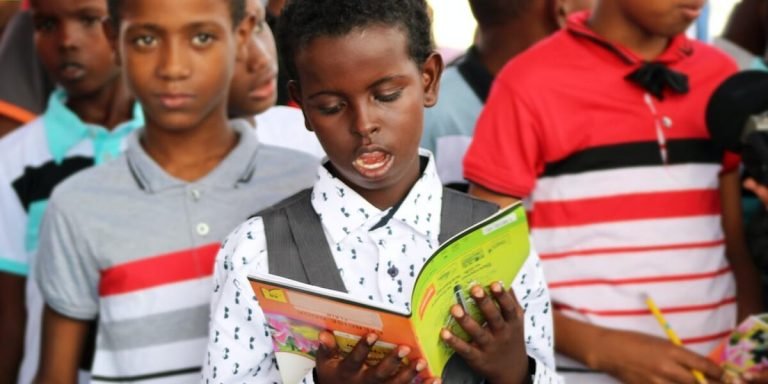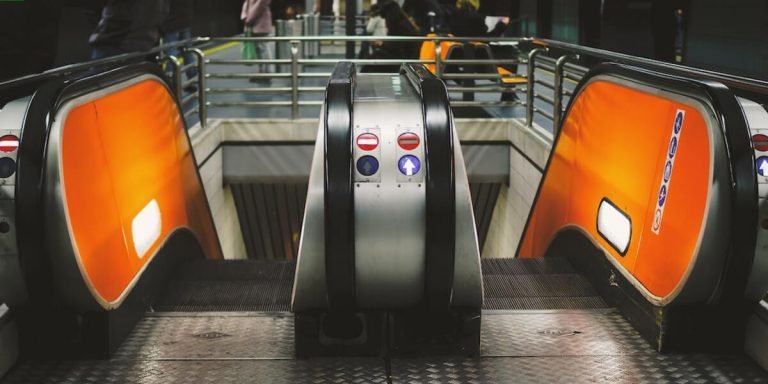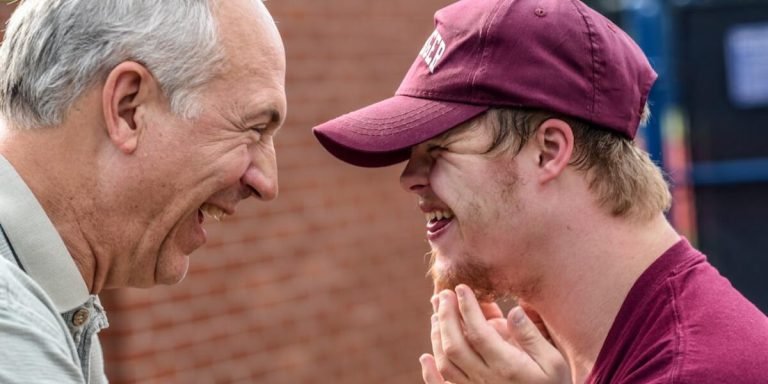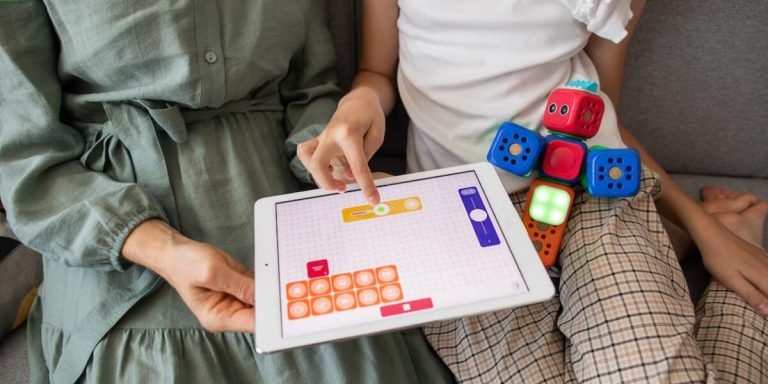Self Contained Classrooms: A Comprehensive Guide for Parents and Educators
In the realm of special education, there are numerous resources and support mechanisms in place to aid both students and educators. Central among these is perhaps the concept of self contained classrooms – an innovative approach tailored specifically for children who have unique learning needs.
This particular arrangement puts a greater emphasis on personal attention and individualized instruction plans. It can play a crucial role in enabling each student to achieve their highest potential while ensuring they receive necessary accommodations for any disabilities or challenges that may impact conventional learning styles.
Did you know?
Despite common misconceptions, research shows that students in self-contained classrooms often exhibit higher academic growth rates compared to their peers in traditional classroom settings.
Understanding Self-Contained Classrooms: Definitions and Key Characteristics
In the sphere of education, one type of environment that has gained significant attention over the years is self-contained classrooms. These are specialized educational settings designed to address and cater to the unique learning needs of students who may struggle in traditional classroom setups due to varying cognitive or behavioral challenges. Such a structure ensures that these learners receive an amplified level of individualized instruction helping them scale new heights.
The fundamental characteristic that distinguishes a self-contained classroom from other formats lies in its absolute student-centric approach. Each child’s academic journey gets tailored around their specific requirements away from any potential disruptions associated with regular classes—demystifying complex concepts becomes easier for educators when they can tap into each learner’s pace without feeling rushed by a standardized curriculum.
For decades now, technology revolution has been reshaping every aspect of our lives, including education; hence it plays an inevitable role even in such specially curated environments like Self Contained Classrooms too. Notably within special education resources support domain where it helps bridge communication gaps between teachers and students while facilitating interactive learning experiences which transcends conventional barriers.
With smart tools at disposal, grasping abstract notions transforms into exciting visual treat triggering greater involvement among children often resulting high retention rates—a prime goal for any educator dealing with differently-abled kids! From sensory stimulation devices aiding speech therapy sessions adaptive hardware/software help overcoming physical limitations-with technology integration we’re seeing breakthroughs unimaginable few decades ago!
The Role of Special Education Resources in Self-Contained Settings
Self-contained classrooms, an integral part of childhood education today, are specially designed educational setups that cater to the needs of students with unique learning demands. These environments allow for better use of special education resources and provide greater support in promoting inclusive student engagement and personalized learning experiences.
When it comes to implementing these self-contained settings effectively, technology integration has shown great promise as a vital tool. In 2023, more than ever before, advancements such as Artificial Intelligence (AI), Virtual Reality (VR) applications or even simple interactive online platforms have created opportunities for educators to deliver high-quality instruction tailored specifically to each child’s requirements.
One key component within this tech-integrated approach is Adaptive Learning Software. This formative technology adjusts its response based on individual learner inputs – enabling teachers in self-contained classrooms to personalize lessons according to each student’s specific skill level while also tracking progress over time – thus truly harnessing the power of one-to-one teaching support digitally.
Another crucial resource is Assistive Technologies like speech-to-text tools or text-readers which augment communication capabilities for those with language difficulties – often common among children enrolled in self-contained classroom programs due their distinct cognitive abilities.
Most importantly though are Communication Apps like ClassDojo or Remind which can offer parents unprecedented access into their child’s school day by providing real-time updates about lessons covered, achievements unlocked plus issues encountered if any; making them active participants alongside educators towards nurturing academic growth & development at home too!
Differentiating Between Inclusion Classrooms and Self-Contained Environments
Understanding the differences between inclusion classrooms and self-contained environments is an essential step for parents and educators in making education decisions. Both setups have significant benefits, but they cater to different learning needs.
Inclusion classrooms represent a mixed setting where students with special needs learn alongside their typically developing peers. The primary goal of this arrangement is to promote social integration while addressing individual educational requirements through tailored strategies such as differentiated instruction – all under one roof. But there may be times when learners need more specialized support which can’t always be provided within these inclusive settings.
Here’s where “self contained classrooms” come into play – considered a paradigm shift in 2023’s approach towards childhood education that emphasizes on ‘Special Education Resources & Support’. These are exclusive spaces designed especially for children who require structured, personalized teaching methods because of unique academic or behavioral challenges.
Essential Support Systems for Optimal Learning in Self-Contained Classrooms
In the realm of special education, self-contained classrooms have emerged as highly beneficial learning environments for students with unique educational needs. These specialized settings allow educators to provide individualized instruction and attention at a pace suitable to each student’s abilities. However, their potency is essentially determined by effective support systems that ensure optimal learning.
One such significant system centers around integrating technology in these hallowed spaces of learning. In 2023, cutting-edge tech tools have opened up new avenues towards enhancing teaching methods within self-contained classrooms while complying with federal Special Education Resources mandates. The use of interactive digital whiteboards and assistive devices amplifies engagement levels among students promoting active participation even from those generally exhibiting passive behavior patterns during conventional class sessions.
The interaction doesn’t stop there—technology also bridges communication gaps between home and school effortlessly through advanced applications facilitating regular updates concerning progress tracks or areas needing improvement shared transparently with parents or guardians; this constitutes an imperative part of building comprehensive support structures ensuring no child steps back due to lack of resources or guidance.
Yes indeed! With apt resource allocation combined harmoniously alongside technological advancement’s boon – intimidating challenges encountered within Self-Contained Classroom scenarios are steadily morphing into stepping stones propelling our young learners efficiently on their academic journey setting them securely onto paths offering ample opportunities knocking brightly along every ambitious horizon they aim for.
Implementing Individualized Education Programs (IEPs)
In the ever-evolving landscape of childhood education, self-contained classrooms have become an integral part for many students needing additional resources and support. within these classrooms can make a significant difference in helping children reach their full potential.
Self-contained classroom settings provide a safe learning space where educators are able to focus on individual student needs precisely. Here comes the role of IEPs – personalized plans that cater explicitly to each child’s unique academic, social-emotional and cognitive skill-building requirements.
Developed collaboratively by teachers, parents, school psychologists and other specialized staff members like speech-language pathologists or occupational therapists based on detailed evaluations; every IEP outlines specific goals uniquely tailored for each pupil’s progress. It is essentially not just about curriculum but includes therapies – be it speech therapy or physical therapy as well as interventions required with respect to behavioral aspects too.
The best way forward while implementing IEPs in self contained class rooms involves consistent monitoring along with regular updates reflecting any changes needed corresponding to dynamic growth-plateau patterns seen across different areas over time within pupils’ overall competency matrix during the course of an academic year.
Utilizing Assistive Technology to Enhance Accessibility
In the present age, technology is revolutionizing almost every aspect of our daily lives. Even more so in education – particularly within self-contained classrooms – by bridging gaps and fostering inclusive learning experiences for all students.
Assistive Technology (AT) plays a central role by enhancing accessibility for special needs students in self-contained classrooms. Let’s explore how this tool can transform the educational journey of these extraordinary learners.
Firstly, AT bolsters independence among learners with disabilities or specific challenges hindering their academic progress. Tools like voice recognition systems and text-to-speech software help them navigate course materials at their own pace, creating an empowering environment that encourages autonomous growth and development.
Furthermore, offering adaptive devices such as large-print books or speech-generating devices cater to individual student requirements making lessons accessible regardless of physical constraints or sensory impairments. The virtue of customization inherent in AT makes it easier than ever before for educators to deliver personalized instruction based on unique learner profiles – a hallmark feature of effective teaching strategies suggested for 2023!
Another key advantage lies in providing multisensory reinforcement thereby augmenting information retention rates among students who learn differently due to cognitive variations.
Interactive touch screens introduce tactile elements into instructional design while graphical organizers make abstract concepts visually compelling; auditory cues from e-books supplement written content when catering to diverse learning preferences becomes necessary.
Strategies for Success: Best Practices in Self Contained Classroom Management
In the realm of education, implementing effective strategies for self-contained classrooms has become more crucial than ever in 2023. With advancements in technology, it has now become possible to integrate various learning requirements into a single classroom setup where students with special needs can thrive and progress at their own pace. These environments are known as “self-contained classrooms”.
Such set-ups typically involve smaller student-teacher ratios allowing educators to tailor instructions based on individual needs.
A key feature that underscores success within these contexts is technological integration – an approach encompassing digital tools designed to enhance instructional delivery while remaining mindful of each child’s unique capacities. For instance, interactive whiteboards or tablets could be incorporated for visually engaging sessions; software applications might offer personalized tasks according to different ability levels that continually challenge yet encourage learners.
While adopting new technologies may seem daunting initially, remember this is just one aspect fostering successful outcomes in self-contained classroom management routines. It’s also about creating safe spaces encouraging acceptance and inclusion combined with patient guidance from passionate teachers who believe every learner deserves equal opportunities irrespective of abilities.
Relevant resources paired alongside a supportive educational community further accentuate such experiences paving way towards inclusive educational practices across schools worldwide.
Fostering a Collaborative Relationship with Parents and Caregivers
Building a supportive and collaborative relationship with parents and caregivers is vital for student success in self contained classrooms. This bond not only promotes consistent communication about children’s progress but also ensures the educational strategies align at home and school.
In today’s technology-driven world, it has become easier to maintain this crucial connection between educators and families. By leveraging digital tools like video conferencing apps or real-time messaging services, teachers can hold virtual meetings or share updates – enabling joint decisions regarding the child’s learning process.
Educators should offer resources that enable parents to reinforce classroom teachings at home effectively. For instance, if certain software programs are used during lessons, sharing these applications along with user instructions helps attain better results through synchronous reinforcement.
Moreover, providing special education resources online opens up numerous opportunities for personalized learning even beyond school hours. Parents can access video tutorials explaining different concepts taught in class or e-books packed with activities designed around individual needs of students in self contained classrooms.
Lastly yet importantly, inviting parents’ input on their child’s Individual Education Plan (IEP) makes them feel involved – strengthening trust levels over time while improving performance outcomes for young learners significantly.
Professional Development Opportunities for Educators_SPECIALIST
In the evolving educational landscape of 2023, professional development has never mattered more for educators specialized in self-contained classrooms. Grasping new teaching strategies and implementing technology integration is paramount to successful classroom management.
Delving into an array of resources available can empower both teachers and students alike. In a self-contained setting where special education needs take center stage, it’s crucial that every educator prioritizes their continual growth and learning.
One valuable approach involves joining peer networks or online communities dedicated to special education discussions. From sharing best practices to discussing everyday challenges, these platforms foster collaboration among professionals navigating similar paths.
Furthermore utilizing tools like Learning Management Systems (LMS) allows educators safeguard timely curriculum delivery while facilitating student progress tracking effortlessly – dual benefits immensely practical this digital age!
Conclusion
In the pursuit of offering a conducive learning environment for every child, self-contained classrooms stand as a striking beacon. These tailor-made havens are more than just rooms – they’re platforms where individual needs are addressed and potential is unfurled. So whether you’re an educator looking to innovate your teaching methods or a parent seeking the best educational path for your child, understanding self contained classrooms can be your first step towards exceptional education.
Our website holds many such insights that unravel the world of childhood education with simplicity and clarity; it’s more than worth browsing through. We strive to equip parents and educators alike with critical information not only about unique systems like self-contained classrooms but also on other pivotal aspects relating to educating children. Let’s navigate this incredible journey together – after all, when it comes to shaping young minds, no stone should be left unturned!







